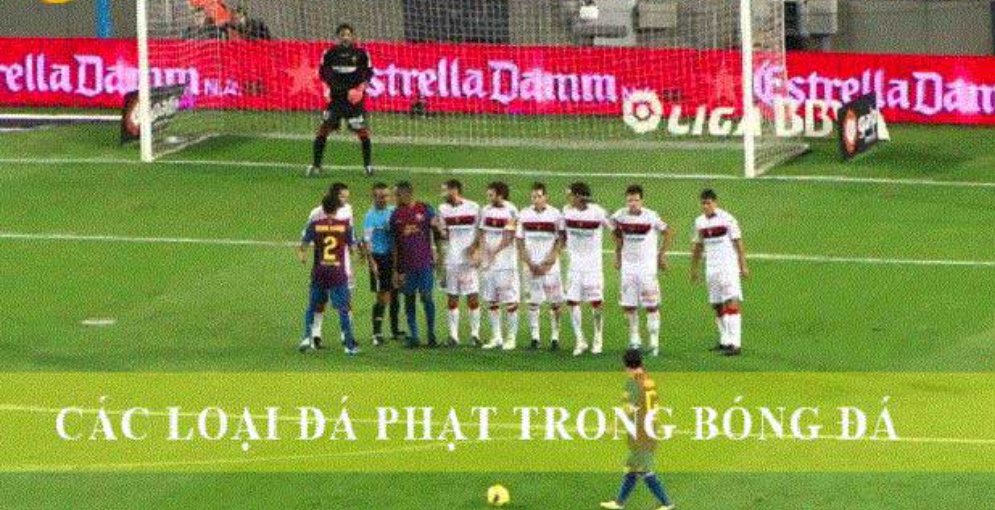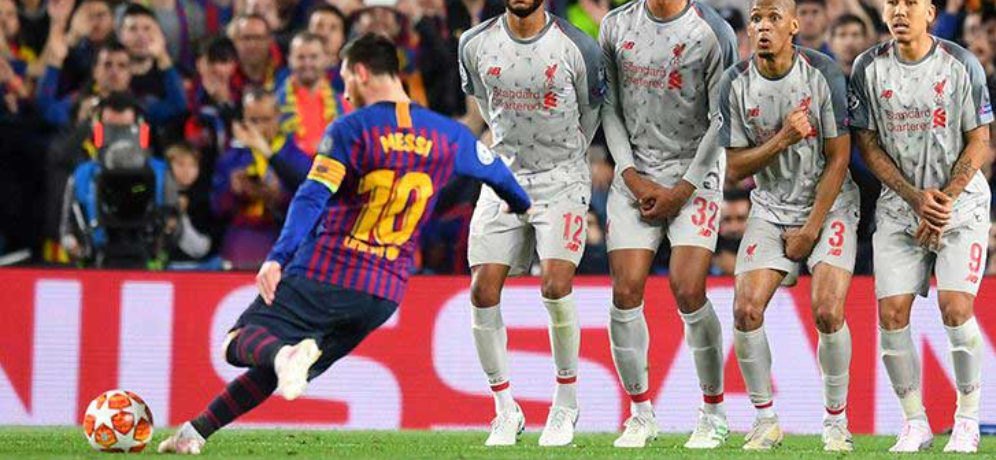Nowadays, soccer is loved by many for the allure of its matches. Depending on the situation, players will have different ways to handle it. Although it is always said to play with a spirit of fair play, there are times when fouls occur, leading to soccer free kicks. So, how many types of free kicks are there, and what are the factors that affect the outcome of a kick? Let's find out with
quality soccer tips .

What is a free kick in soccer?
According to the general definition from the International Football Association, a free kick or penalty kick is an action used to restart the game with an advantage for the attacking team. It is executed by kicking the ball back into play with the foot.
Free kicks include four main types: direct, indirect, corner, and penalty kicks. The ball is given to the attacking team while the team with the player who committed the foul must go on defense.
A soccer free kick is a means to balance the game when one team accidentally or intentionally obstructs or hinders the opponent. It is also a moment that fans look forward to, hoping one of the teams can create a miracle. These are dramatic moments in the 90 minutes of the game. Therefore, many fans always search for clips and highlights featuring penalty shots to watch again after each match.
Types of soccer free kicks
As we mentioned, there are four main types. These are seen as golden opportunities given to the team that has been fouled against, and also a way to reset the game. Newcomers stepping into the world of soccer must grasp this. We invite readers to explore what's in store.
Direct free kick
A direct free kick is one of the situations of a serious foul in soccer outside the 16.5-meter area. The attacking players often try to make the opponents commit a foul against them. If such a situation occurs within the penalty area, it's even better, as the result is a penalty kick.
Direct free kicks are unique opportunities to score goals, with the probability of scoring being second only to penalties. Therefore, the team awarded a soccer free kick has the chance to increase their lead if they are already ahead. If they are behind, it's a great opportunity to equalize the score.
Normally, a defensive wall is set up 9.1 meters away from the spot where the ball is placed. In cases where the ball is too far or too close, the distance is estimated to be about 1/3 of the distance from the placement spot to the goal.

Indirect free kick
An indirect free kick is a less severe form, mostly occurring outside the 16.5-meter penalty area for minor offenses or technical faults such as offside violations or obstructing an opponent's progress. When taking an indirect free kick, the players of the team being penalized must stand at least 9.15 meters away from the ball. If a goal is scored directly from an indirect free kick, it will not count. Instead, the team will be awarded a corner kick, as the condition requires that the ball must touch at least one other player before entering the goal.
The ball is placed at the location where the infringement occurred. Opposing players are not allowed to stand too close to the spot of the free kick. The player taking the kick is not permitted to touch the ball a second time until it has touched another player.
>> See more:
1x2 soccer Tips - Offering Insights from Top 100 Websites Globally
Corner kick
A corner kick is awarded to the attacking team when the ball completely crosses the goal line, outside of the goal frame, with the last touch coming from a defending player, including the goalkeeper.
At this point, the assistant referee will use their flag to point towards the corner arc on the field to indicate the spot. This situation commonly occurs in a match and is considered a method to restart the game from the intersection of the goal line and the touchline. It is not a case of a foul between players. Instead, it's a situation where the ball goes out of play under certain conditions. It serves to restart the game and provides an opportunity for the attacking team.
Penalty kick
A penalty kick, or simply a penalty, is a term very familiar in the sport of soccer, also representing the most severe form of soccer free kick. It is the most critical direct face-off situation, a one-on-one duel from the 11-meter spot. Only one player from the attacking side performs the kick, with only the goalkeeper defending the goal. So, when does a penalty occur? It happens when an opposing player commits a serious offense within the 16.5-meter penalty area. During execution, the ball must be precisely placed on the 11m mark that is already designated on the field.
Factors that can affect the outcome of a free kick
Besides subjective factors such as ball-throwing techniques and the disparity in the strength of the two teams, there are also many external objective factors that can significantly influence the outcome of the match.
The emotions, psychology of the player
This factor might seem unimportant, but in reality, it significantly affects the outcome of soccer free kicks. If a team is trailing by a large margin, the player executing a shot like a penalty will be psychologically impacted. They feel compelled to score to balance or narrow the score gap, thus adding considerable pressure on themselves. Sometimes, despite practicing and succeeding a hundred times, they may miss foolishly in an official match.
The player's luck
In any sport, players always need a bit of luck. Some minor fouls might go unnoticed by the referee and not result in any penalties. This can also be a certain advantage for the team in play. However, such cases are extremely rare, and players usually rely on 99.99% of their own strength and skills. The element of luck is just something they hope to have on their side. In soccer free kicks, they also need a bit of luck to successfully score a goal.
External weather, climate factors
Other external factors, such as the weather, can also significantly impact the game. For teams competing in international or continental tournaments, they often have to play away games. In these cases, they are subject to the unpredictable weather conditions, including sun, wind, rain, or snow, depending on the geographical location and climate. Therefore, visiting teams may face a slight disadvantage compared to the home team.
Conclusion
The Wintips bookmaker has just provided valuable information about the 4 types of soccer free kicks. We hope our readers now have a comprehensive overview of this incredibly fascinating sport. In our upcoming articles, we will introduce more interesting topics such as how to
football win tips , fluctuations in bookmaker odds, so don't miss out!